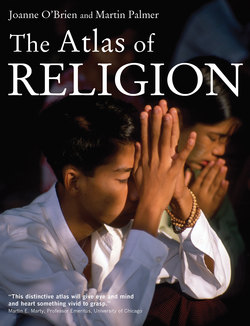Читать книгу The Atlas of Religion - Joanne O'Brien - Страница 10
На сайте Литреса книга снята с продажи.
Оглавлениеus to create another new map in this revised edition. The map on ‘Faultlines’ (pp 64–65) highlights the deep and ancient faultlines that run across parts of the world, and which have their origins in religious tensions. The violence of the ‘civil war’ in Iraq between Sunni and Shi’a has its roots in conflicts going back to the 7th century, and the opposition by much of ‘Christian’ Europe to the entry of ‘Islamic’ Turkey goes back to the 14th century. The business of religion is also covered here. The dramatic growth in Islamic banking and in ethical investment movements within the religions is recorded – something the wider world has yet to truly awaken to. Likewise, the sheer scale of religious funding and support of those suffering from HIV/AIDS, and the level of development funding from Islam and Christianity are things the world rarely acknowledges. The heart of the atlas remains the fascinating story of what the major religions in the world are, where they are today and how much power they have. The story of which religion is predominant in a given country is told both through numbers in the map ‘Popular Religions’ (pp 14–15) and in the three supporting maps, ‘Arrivals’ (pp 16–17), ‘Roots and Branches’ (pp 18–19) and ‘Origins’ (pp 82–83). These help to fill out a picture of the overall range and spread of faiths culturally, geographically and historically. Supporting this are the maps of specific religions, which introduce us to a shifting and changing religious world – be that Sikhs in the USA, the recovery of Buddhism in Asia or the role and sheer size of Catholicism worldwide. In trying to give a picture of the scale and nature of religious involvement in the world, we touch upon relationships with the state, the role of women, and the decline in many indigenous religions and the corresponding rise of newer forms of religious identity that draw heavily upon traditional and indigenous religions such as Shamanism. The adaptability of religion is one of its key features. Religions are able to convince us that they are unchanging, yet they survive and spread precisely because they are constantly adapting. We have tried to capture something of this dynamic solidity in the maps. Take for example, the place of religions in the environment movement. In the first edition, we explored the rising role of religions as partners in environmental protection. This is recorded again, and illustrates a dramatic rise in the extent and level of
